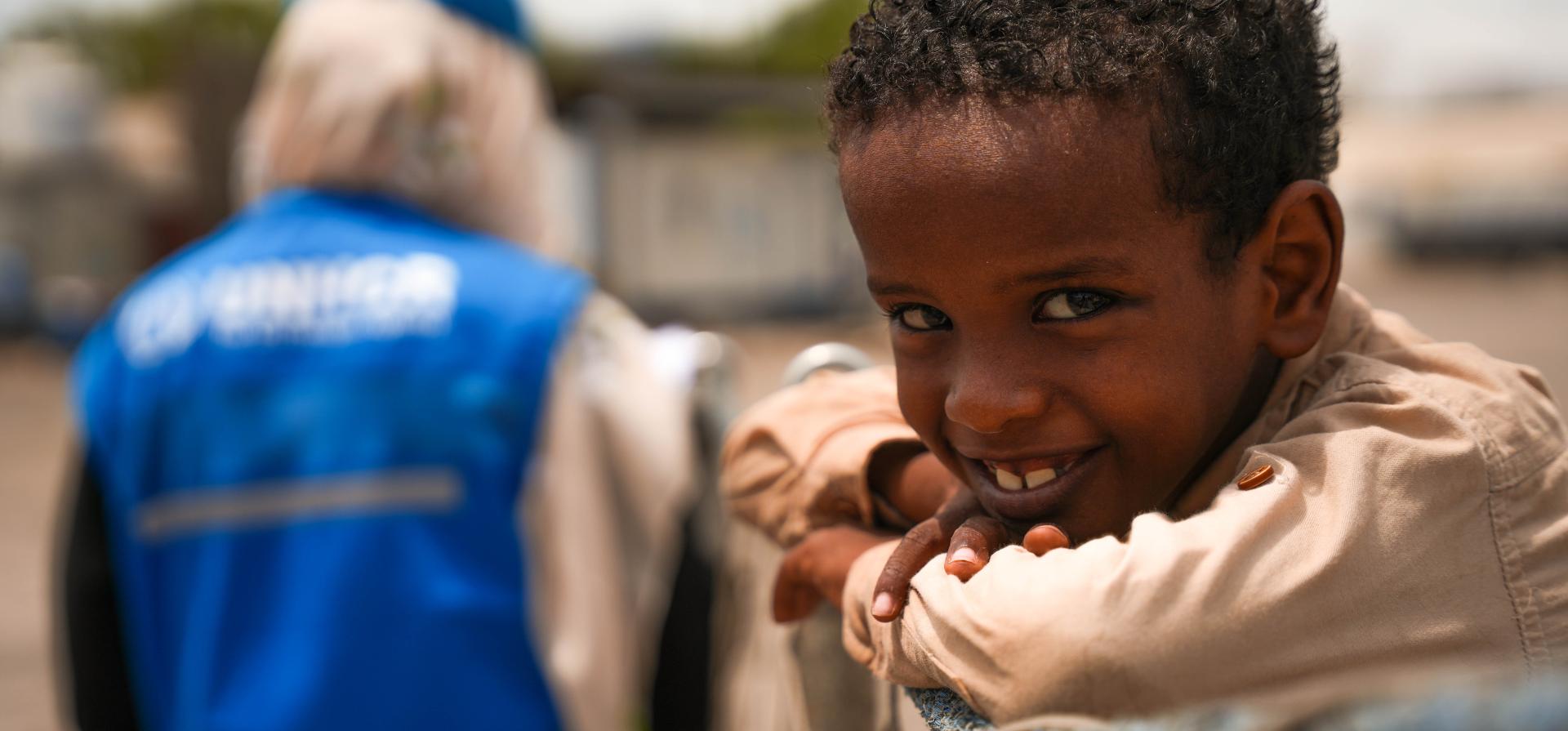Executive summary
By the end of 2022, the Middle East and North Africa hosted 2.4 million refugees, 12.6 million internally displaced people (IDPs), 251,800 asylum seekers and 370,300 stateless persons. The region endured political and economic instability, a fragile security environment and an uncertain funding situation in 2022. Rising food and fuel prices made the solidarity of host countries and generosity of donors vital. The Vulnerability Assessment of Syrian Refugees in Lebanon found almost 90% were in extreme poverty and needed assistance to survive. In Yemen, 78% of the population was living below the poverty line, making life even more precarious for the 90,700 refugee and asylum-seekers and 4.5 million displaced Yemenis, 75% of them women and children. In Algeria, the cost of food doubled for over 90,000 Sahrawi refugees in Tindouf, who were increasingly at risk from malnutrition.
UNHCR conducts refugee status determination under its mandate in 17 of the region’s 18 countries and, in 2022, it newly registered almost 200,000 individuals, a 60% increase on 2021. 32,100 new asylum-seekers, 44% of them children, were identified and registered in North Africa, primarily Malians, Sudanese and Syrians. 117,000 refugees and migrants crossed by sea from North Africa to Europe, 23% more than in 2021. 24,800 were disembarked in Libya after rescue or interception. Sea arrivals to Yemen more than doubled from 2021, and attempts to cross the sea to Europe from Lebanon tripled. 2,200 refugees and migrants died on routes between North Africa and Europe, 61% of them in the central Mediterranean.
Across the region, UNHCR strengthened accountability mechanisms and participation of refugees and host communities, responding to 1.8 million calls on issues such as registration, cash assistance, durable solutions, protection and health. 1.5 million community members were reached through volunteer groups and community centres in Algeria, Iraq, Israel, Jordan, Lebanon, Libya, the Syrian Arab Republic (Syria) and elsewhere.
Around 2.2 million of the region’s forcibly displaced and stateless people were school-aged. They faced complex protection challenges, a risk of dropping out of school and limited employment prospects. UNHCR worked to strengthen national education systems and support the safe return to schools after COVID-19 lockdowns. 130,000 children in Iraq, Jordan, Lebanon and Türkiye benefited from specialized services, while nearly 100,000 children participated in child protection and psychosocial support programmes. Almost 70,000 adults benefited from parenting support. Despite underfunding, UNHCR distributed over $323 million in cash to 2.2 million individuals, half of them children. Most was spent on food, rent, health and utilities. UNHCR provided 1 million people with core relief items and tents, and maintained cross-border support for the emergency response in northwestern Syria.
UNHCR and UNDP co-led the Regional Refugee and Resilience Plan (3RP) in response to the Syria crisis, coordinating the work of more than 270 partners and connecting the response with longer-term national growth and development strategies. With gender-based violence being a priority, over 158,800 survivors and people at risk benefited from an array of services through the 3RP.
In Iraq, UNHCR strove to empower displaced and host communities through social protection and access to public services and the labour market, and assisted individuals to obtain 72,000 civil documents. UNHCR prepared to shift from emergency response towards an area-based development approach in 2023.
In Libya, UNHCR provided critical protection services at its Community Day Centre and life-saving assistance at detention centres and disembarkation points. 2,200 vulnerable people departed to safety via emergency evacuations, resettlement and complementary pathways, and 22,400 internally displaced Libyans returned to their homes.
51,300 Syrians returned home in 2022, up from 36,500 in 2021, but fewer of those remaining in exile expressed a wish or a plan to return. UNHCR identified 777,000 Syrian refugees needing resettlement. UNHCR assisted returning Syrian refugees through a network of community centres, and undertook dialogue with the Government to address obstacles to voluntary return. UNHCR submitted 24,400 refugees for resettlement from the region – an increase of 19% compared to 2021 – and another 20,400 were submitted from Türkiye, 17,000 of them Syrians. Over 31,000 people departed on resettlement.
